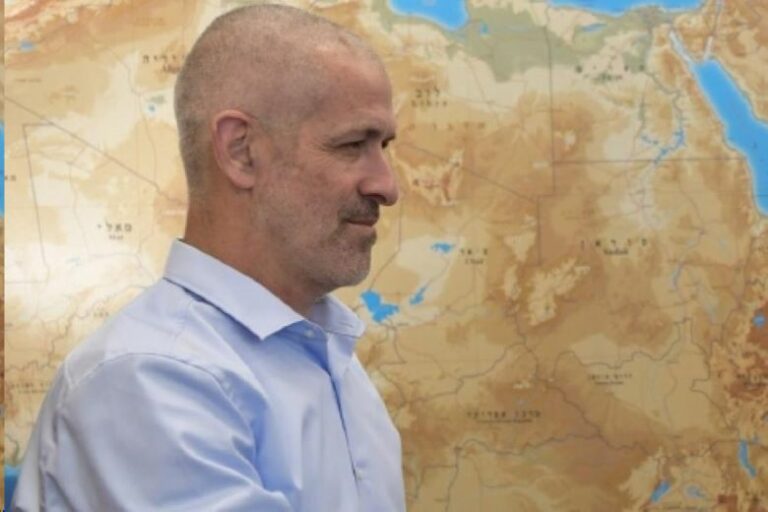 A year to the day after introducing his bold tax plan to fund universal pre-kindergarten and expanded after-school programs, Democratic nominee for mayor and Public Advocate Bill de Blasio returns to the Association for a Better New York today. De Blasio will lay out his comprehensive vision to tackle income inequality and end the Tale of Two Cities, bringing New York together as one city.
A year to the day after introducing his bold tax plan to fund universal pre-kindergarten and expanded after-school programs, Democratic nominee for mayor and Public Advocate Bill de Blasio returns to the Association for a Better New York today. De Blasio will lay out his comprehensive vision to tackle income inequality and end the Tale of Two Cities, bringing New York together as one city.
Read the full speech below:
Good morning.
I want to thank ABNY for hosting this discussion and inviting me to attend once again. Throughout its history—from the fiscal crisis through today—ABNY and its members have provided a forum for discussing the challenges facing our city.
I want to thank Bill Rudin for his leadership of ABNY, and his longstanding commitment to the City of New York.
It is an honor to come before you, as I did exactly one year ago today. Then I called for real, concrete change to fight the growing economic inequality in our city. I made the case that we needed new ideas and new resources to produce that change.
Today, I want to talk about how we can work together to make that vision a reality.
I want to start with the plan I described to you one year ago. I believe we must guarantee every child in our city a quality pre-kindergarten education and every middle school student a safe after-school environment that keeps them on-task, off the streets, and out of harm’s way.
And I strongly believe we must back up our commitment with real dollars — a modest tax on those earning more than a half-million dollars a year.
As I said a year ago, these investments are not only critical for those who are struggling, but will help all New Yorkers — because we all benefit when the middle class is growing, and more of our fellow citizens are lifted out of poverty.
Over the course of this past year, our case has only grown stronger.
We have seen President Obama and Governor Cuomo elevate the importance of early education as the key to transforming our education system – and transforming young lives in the process.
We have seen studies by the National Bureau of Economic Research that show that providing free pre-kindergarten to families in need is among the most effective means of reducing income inequality, increasing social mobility, raising college graduation rates, reducing crime, and increasing wages.
That’s why the plan I announced here a year ago has become a centerpiece of my vision for progressive change in New York.
But this investment won’t simply set those children – our children — on the right path for a brighter future. It sends a signal to families across our city that beyond the skyscrapers and high-rises that paint our magnificent skyline we haven’t forgotten what New York City is really about, a city of neighborhoods.
A city that understands our economic might isn’t measured solely by the number of millionaires who call New York home, but by the promise that every family has a shot at living and working and raising children in our five boroughs.
Throughout this campaign, I’ve spoken about New York becoming a Tale of Two Cities – one that has worked very well for our city’s elite but one that’s left millions of everyday New Yorkers behind.
And while we certainly don’t begrudge our fellow New Yorkers their success, we also can’t ignore those who struggle to find good jobs and quality schools, those who can’t find affordable housing and needed health care, those who don’t have access to early childhood and after-school programs that set our children on the right path, and keep them there.
Make no mistake. When so many New Yorkers are being priced out of their own city, it’s not merely another problem for us to consider. It’s a crisis of affordability – a crisis that’s reached a tipping point in the years since the Great Recession.
At the same time Wall Street has not only recovered to its pre-recession levels, but managed to set new records, nearly half of our city lives below or near the poverty level.
This affordability crisis is different from the soaring crime we faced twenty years ago, different from the turmoil that followed 9/11. But it is no less urgent, and requires no less commitment on the part of our city’s leadership to address.
It is felt by parents speaking in worried whispers after their kids have been put to bed, parents who are living paycheck to paycheck, with nothing left over. It is felt by working single moms who have to cast aside nervous thoughts of their children’s whereabouts during those long hours after school lets out, but before their work day ends. It is felt by once solidly middle class families who are being squeezed by skyrocketing housing costs.
This crisis can be seen starkly in the changing nature of New York City’s jobs landscape. Our city has a quarter million more jobs than it did in 2000—and for that I give Mayor Bloomberg his share of the credit.
But 200,000 of those jobs are in a handful of low wage sectors, sectors like retail and food service where the average pay is less than $28,000 per year. Meanwhile, we’ve shed more than 50,000 middle class jobs in that same time frame.
The combination of low-wage jobs and a housing market that fails to produce sufficiently affordable homes has created painful outcomes. Just one stunning example — 28% of families in our homeless shelters include at least one employed adult.
Think about it: these are thousands of our fellow New Yorkers who work hard at their jobs, have families with children, but have no home.
It is a foundational American principle that if you work hard and play by the rules, you should be able to make a life for your family. But now, for too many New Yorkers, that dream is in danger of slipping away.
As many of you know, I’ve been talking about these issues over the course of this election, and calling for a dramatic change in direction. However, my opponents in this campaign don’t think we need a course correction.
They choose to accept – or else willfully ignore – the income inequality that threatens the foundation of who we are as New Yorkers.
I have a different point of view. I don’t accept this as our destiny. I am committed to tackling this crisis. I know we can solve this crisis of affordability, and we will, but only if we work together.
We cannot resign ourselves to the mindset that says rising inequality is a necessary byproduct of urban success. Instead we must recognize that the economic insecurity steadily creeping steadily up into the middle class is a threat to our city’s long-term future and something we must urgently address.
There is nothing divisive about acknowledging the struggle so many New Yorkers face. It’s not class warfare. As my old boss Bill Clinton would say, it’s arithmetic. And it’s reality, the daily experience facing so many across New York.
And before we can address this great challenge, we first must be honest with ourselves. We must first admit that the affordability crisis exists – and then resolve, together, to do something about it.
Many of today’s policies have sidestepped the problem – or even made it worse.
City and State support for CUNY—that great engine of middle class strength—has declined sharply, leaving students to pick up the tab through higher tuition.
We’ve lost more than 30,000 seats in our after-school programs since 2008, depriving young people of safe, supervised alternatives to the lure of gangs and violence.
And while the Bloomberg administration’s New Housing Marketplace plan was admirable and is on track to reach its goal of 165,000 new or preserved units of affordable housing, we are in many ways treading water, barely producing enough new units even to offset the affordable homes we lose in any given year.
Housing costs in New York City are at an all-time – with average rent having just crossed $3,000 per month for the very first time.
We need fundamental change that addresses the struggle of millions of New Yorkers – policies that take dead aim at this Tale of Two Cities.
Instead of giveaways that disproportionately favor luxury housing, I have laid out a plan for hard and fast rules to require construction of new affordable homes for working and middle class New Yorkers.
Instead of pouring billions of dollars into unnecessary and overly generous tax incentives for big corporations, we need to invest in small businesses, in workforce training, and in CUNY—the most reliable pathways for those seeking a shot at entering the middle class.
Instead of an economy that generates poverty-wage jobs, we need to raise the wage floor so that working families on every step of the economic ladder can make ends meet and see a way up.
That’s real change. That will make a difference not just for a fortunate few—but for hundreds of thousands of families who have felt shut out of our economy for far too long.
It’s big thinking – that’s true. But thinking big is what we New Yorkers have done throughout our history.
And it’s time to think big again, and change our approach so that opportunity is something that is open to everyone. We cannot expect prosperity to trickle down from the top; that is a philosophy that’s failed time and again. Instead, we must build opportunity from the ground up.
I give Mayor Bloomberg great credit for recognizing the need to diversify our economy from its over-reliance on the finance sector, and for strategic investments to create jobs to offset the decline of traditional manufacturing.
The administration’s emphasis on expanding New York’s research universities as a magnet for talent, growing the tech sector and launching the applied sciences initiative, helping to bring back and grow New York City’s film and television industry, and spurring a rebirth in the next generation of manufacturing have all created jobs, diversified our tax base and made our economy more resilient.
These policies were important, and we shouldn’t step back from them — and we won’t.
But while all of those efforts were necessary, alone they are not sufficient to meet today’s economic crisis.
Where these policies have come up short is that they have failed to provide meaningful opportunities for the majority of New Yorkers.
Today too few graduates of our public high schools and our CUNY system are finding employment in these emerging industries. And the vast majority of our unemployed and underemployed citizens are cut off from opportunities in these rapidly growing fields.
We can do more to fuel the growth of each of these sectors while ensuring more New Yorkers are filling these jobs.
That’s why in the Tech sector, I’ve proposed: a dedicated 2-year STEM program at CUNY to connect more graduates of our public university system to jobs in the tech industry; a scholarship that encourages tech graduates from CUNY to stay in New York City after graduation to grow companies or start new ventures;
and 14 additional industry-linked Career and Technical Education high school programs aligned with job growth projections.We must move forward with the Brooklyn Tech Triangle plan and replicate that model, to build new economic development hubs across the City.
To grow the film and television production sector and to create more opportunities for New Yorkers in it I’ve called for: a New Film, Post-Production and Animation School at the Brooklyn Navy Yard; tripling the enrollment in the Made in NY Production Assistant Training Program; creating a “Film & TV Lab,” modeled after the EDC’s successful “Media Lab” for Film Production, Post-Production, and Animation; and bringing more production to Brooklyn, the Bronx, Queens, and Staten Island.
We must continue to re-envision manufacturing in New York City. Manufacturing was once the backbone of New York’s middle class economy. Today, the average annual wage for a manufacturing worker is over $53,000.
In Brooklyn, the number of manufacturing jobs – after decades of decline — has increased in the past three years.
Advanced manufacturing firms, touting new technologies, like 3D printing, are rediscovering what made New York such a successful manufacturing hub in the past: our density, our diversity, our shipping infrastructure, and the innate talent of our people.
To allow these firms to grow and thrive, we must: tighten restrictions in the zoning code to strengthen the city’s 16 Industrial Business Zones; change zoning laws to meet the surging demand for live-work spaces and mixed-use development; replicate the success of the Brooklyn Navy Yard on other City-owned industrial land; expand support for manufacturing by investing in maritime and transit infrastructure, and digital connectivity that increases the value of Industrial Zones; and scale up workforce development programs like Brooklyn Workforce Innovations that connect unemployed and underemployed New Yorkers to the industrial jobs of the future.
Our workforce development programs must be more about quality than quantity. If all we’re doing is placing New Yorkers in minimum wage jobs — with no opportunity for upward growth and mobility — then quite frankly we are all failing.
That is why I have laid out a plan for strengthening the way we train our workforce – by: integrating community-based organizations into a city-wide workforce development system; expanding use of apprenticeship programs in major city construction and service contracts to give opportunities to New Yorkers in all five boroughs; reinvesting $150 million annually in CUNY, and ensuring every city high school is connected to a specific college, or a specific company or sector; and establishing a job creation coordinator to oversee all workforce development programs in the city.
In addition to supporting these emerging sectors, we need to continue to nurture immigrant entrepreneurs who have always been at the heart of New York City’s thriving neighborhood economies. To do that I have proposed: creating economic development hubs in at least twelve immigrant and low-income neighborhoods, these would be one-stop shops in multiple languages that bring together all of New York City’s business development services in accessible neighborhood locations; establishing a $100 million revolving loan fund for neighborhood entrepreneurs; giving local businesses, including immigrant small businesses, a second-shot at City contracts — this would let local firms match the price offered by a lowest responsible bid, encouraging local business, while still getting the best deal for the taxpayer; and ending City Hall’s fine assault on small businesses by banning quotas, utilizing warnings instead of financial penalties for first-time and minor violations, and making the appeals process for small business owners easier to navigate.
We need to do all of these things to continue to grow and diversify New York City’s economy.
But most fundamentally, we need to do more for the millions of New Yorkers who work long hours for low wages and who suffer the most from New York’s affordability crisis.
We must raise the wage floor by: expanding our Paid Sick Leave law to include hundreds of thousands of working New Yorkers not currently covered, because you shouldn’t lose a day’s pay to take care of a sick child; passing a real living wage law that says if you are receiving city subsidies you are going to creating good paying jobs for New Yorkers; cracking down on wage theft that is all too prevalent in our economy; and supporting efforts to raise wages and improve conditions in low-wage sectors like the fast-food and carwash industries, where workers are struggling to assert their most basic rights to come together and bargain collectively for higher wages.
For nearly a century, unions have provided the most secure path for Americans in low-wage jobs to join the middle class and it can and must be that way again.
In addition to creating good jobs for New Yorkers, we need to tackle the root of our affordability crisis – the rising cost of housing.
That’s why I have proposed an ambitious plan to build or preserve 200,000 new and preserved units over the next decade— that will put affordable housing in reach for more families in every neighborhood.
We will get there by converting a system based on incentives that have yielded too little, to one based on clear requirements for affordability. We need a stronger hand to make sure development will create and preserve places for a diverse range of families to live and raise their kids.
When the public action of rezoning creates huge new value for developers, we will require, not simply encourage, the production of affordable housing.
Taken together, the elements of this platform amount to a very different vision for our city.
It is a vision that says we need a City government that recognizes itself as an instrument to lift people up, and to truly foster opportunity for all.
Look, I know not everyone in this room agrees with every part of my plan.
But I know we all share a set of values – that every child deserves a first rate education; that everyone who works hard and plays by the rules should be able to earn a wage that can support a family; that people should be able to live in the same neighborhoods they’ve spent their lives.
And most of all we all share a belief: that New York City is the greatest city in the world – not simply because of our economic might and stunning skyline and vibrant culture, but because we are a city that leads the nation and the world in remembering that we are bigger and stronger and better as a city when we make sure everyone has a shot.
So today let’s go forth – together – and resolve that the Tale of Two Cities will be in our past and that building one city will be our future.
(YWN Desk – NYC)










